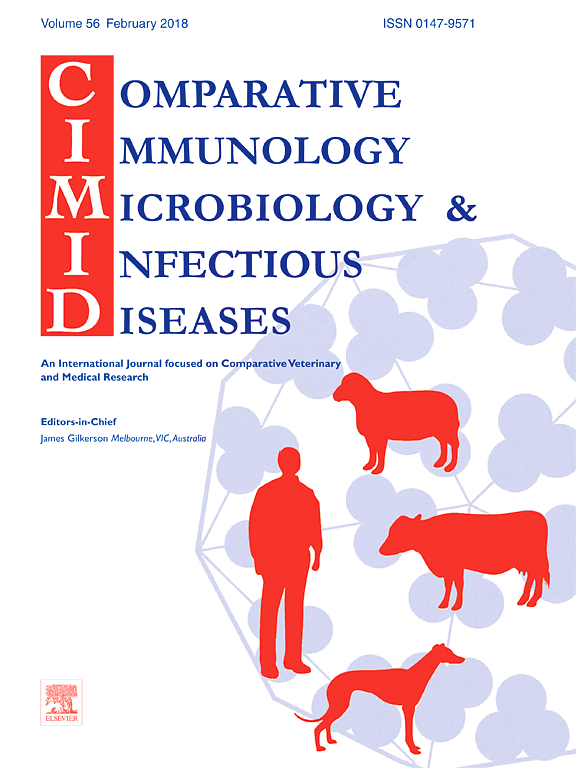View Item
- xmlui.general.dspace_homeCentros Regionales y EEAsCentro Regional Santa FeEEA RafaelaArtículos científicosxmlui.ArtifactBrowser.ItemViewer.trail
- DSpace Home
- Centros Regionales y EEAs
- Centro Regional Santa Fe
- EEA Rafaela
- Artículos científicos
- View Item
Characterization of immune response in Staphylococcus aureus chronically infected bovine mammary glands during active involution
Abstract
The aim of this study was to characterize the immune response in Staphylococcus aureus chronically infected bovine mammary glands during active involution. Twenty-one Holstein non-pregnant cows in late lactation either uninfected or with chronic naturally acquired S. aureus intramammary infections (IMI) were included in this study. Cows were slaughtered at 7, 14 and 21 d after cessation of milking and samples for immunohistochemical analysis were taken.
[ver mas...]
The aim of this study was to characterize the immune response in Staphylococcus aureus chronically infected bovine mammary glands during active involution. Twenty-one Holstein non-pregnant cows in late lactation either uninfected or with chronic naturally acquired S. aureus intramammary infections (IMI) were included in this study. Cows were slaughtered at 7, 14 and 21 d after cessation of milking and samples for immunohistochemical analysis were taken. Protein expression of toll-like receptor 2 (TLR2) and TLR4 was significantly higher in S. aureus-infected quarters than in uninfected controls at the three involution stages studied. Protein expression of tumor necrosis factor-alpha (TNF-α), interleukin (IL)-1α and IL-17 was significantly affected by IMI; being higher in S. aureus-infected than uninfected quarters during all evaluated stages. In S. aureus-infected and uninfected quarters protein expression of lactoferrin increased from day 7–14 of involution, decreasing significantly to day 21 in mammary quarters with chronic infections. The number of monocytes-macrophages was significantly higher in S. aureus-infected than in uninfected control quarters at 7 and 21 d of involution. The number of T lymphocytes was significantly higher in S. aureus-infected than in uninfected quarters at 7 and 14 d of involution while the number of B lymphocytes was significantly higher in S. aureus-infected than in uninfected quarters during all evaluated stages, showing a progressive increase as involution advanced. These results demonstrated a sustained and exacerbated innate and adaptive immune response during chronic S. aureus IMI, playing a critical role in the infection control during active involution.
[Cerrar]

Author
Andreotti, Carolina Soledad;
Baravalle, Celina;
Sacco, Sofía Clara;
Lovato, Melisa Belen;
Pereyra, Elizabet Amanda Lorena;
Renna, María Sol;
Ortega, Hugo Hector;
Calvinho, Luis Fernando;
Dallard, Bibiana Elisabet;
Fuente
Comparative Immunology, Microbiology and Infectious Diseases 54 : 51-60 (October 2017)
Date
2017-10
ISSN
0147-9571
Formato
pdf
Tipo de documento
artículo
Palabras Claves
Derechos de acceso
Restringido
 Excepto donde se diga explicitamente, este item se publica bajo la siguiente descripción: Creative Commons Attribution-NonCommercial-ShareAlike 2.5 Unported (CC BY-NC-SA 2.5)
Excepto donde se diga explicitamente, este item se publica bajo la siguiente descripción: Creative Commons Attribution-NonCommercial-ShareAlike 2.5 Unported (CC BY-NC-SA 2.5)

